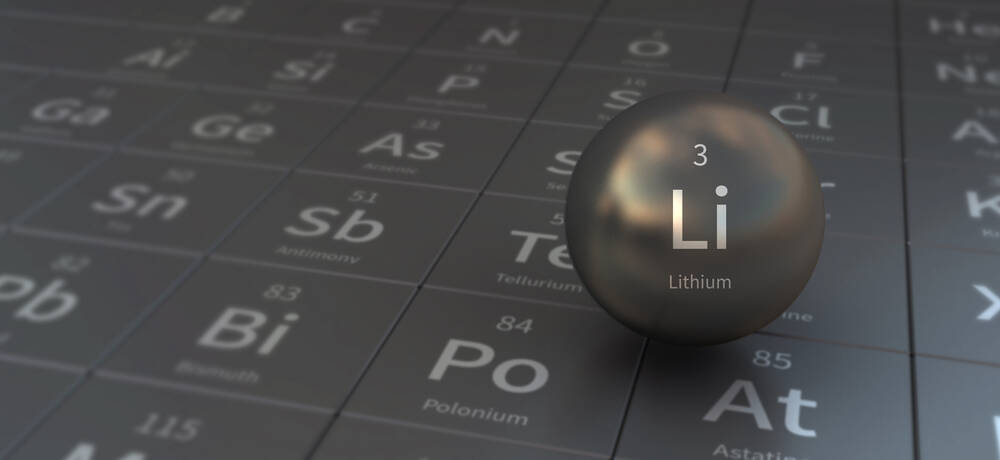Huge Lithium Discovery Could End World Shortages ... Oh, Wait, It's In Iran

Lithium, sometimes hyped as white gold, has been highly sought after for its role in battery production, and other things.
Global demand is expected to continue to outstrip supply in the years to come. Albemarle Corporation projects [PDF] lithium demand will rise from 1.8 million metric tons in 2025 to 3.7 million metric tons in 2030 largely due to its role in electric vehicles and other battery dependent devices.
The White House last year said critical minerals – rare earth metals, lithium, and cobalt – "are essential to our national security and economic prosperity."
Alas for the US, the latest cache of this malleable metal has turned up in Iran – one of just four countries America has designated a state sponsor of terrorism.
According to The Financial Tribune, an English language news publication focused on Iran that's operated by Tehran-based Donya-e-Eqtesad, Ebrahim Ali Molla-Beigi, director general of the Exploration Affairs Office of the Ministry of Industries, Mining and Trade, said that Iran has discovered its first lithium reserve in Hamedan Province, in the western part of the country.
The reserve is said to be 8.5 million metric tons, which – if accurate – would be among the largest known deposits yet discovered.
According to the US Geological Survey [PDF], the top five identified lithium reserves are: Bolivia, 21 million tons; Argentina, 20 million tons; Chile, 11 million tons; Australia, 7.9 million tons, and China, 6.8 million tons.
A US ton (short ton) is 2,000 pounds; a British or Imperial ton (long ton) is 2,240 pounds; a metric ton (tonne) is 2204.6 pounds or 1000kg. Your mileage may vary, as we've documented before.
Lithium is used not just in car batteries, but also in battery-powered defense equipment, among other things. "Lithium batteries are found in nearly every weapon system used by the US Department of Defense, particularly for portable equipment," the National Mining Association says.
- US and EU looking to create 'critical minerals club' to ensure their own supplies
- US Department of Energy 'flooring the accelerator' with $2.5bn battery loan on battery plants
- Used EV car batteries find new life storing solar power in California
- Massive energy storage system goes online in UK
Iran two years ago signed a 25-year strategic cooperation agreement with China, so its newfound lithium wealth also looks likely to strengthen China's already extensive control of the supply chain for strategically and economically important minerals. This occurred coincidentally not long after the US killed a top Iranian general with a drone strike.
And then there's economics
While Iran doubtless welcomes its lithium find, its timing could be better – the price of lithium has slipped recently due to the global economic downturn.
Over the past two years, the price of lithium surged, leading to talk of shortages. Global consumption of lithium in 2022, according to the US Geological Survey, was 134,000 tons, representing an increase of 41 percent from 95,000 tons in 2021.
But in the past three months, lithium prices in China have fallen, according to The Financial Times, due to weaker than expected sales of electric cars. As of January, China, a major lithium producer and consumer, stopped subsidizing electric cars, leading to higher prices and reduced demand. And the price of lithium is expected to decline further this year.
Nonetheless, interest in securing the strategic supply chain remains. Such efforts have been referred to as the new Great Game, likening today's international race to make alliances and secure control of minerals and metals to the political rivalry between the British Empire and the Russian Empire in Central Asia from 1830 to 1895.
For its part, among other initiatives, the US hopes to boost domestic lithium production this spring with a Berkshire Hathaway Energy Renewables project, based in Imperial County, California. The project aims to extract lithium from geothermal brine and, if successful, could scale up to 90,000 metric tons of lithium per year by 2026, according to the White House.
Enjoy the new Great Game, and may the odds be ever in your favor. ®
Boomnote
There's another use of Lithium. A naturally occurring isotope of the element – 6Li – is a key ingredient in the fusion fuel of practical thermonuclear weapons. We mention that because Iran is so very keen on developing its own nuclear weapons.
We also can't bring up Li-6 without mentioning the United States' Castle Bravo thermo-nuke test in the early 1950s that was a much larger bang than expected – a 15MT explosion versus the predicted 6MT – due to the Americans thinking the abundant 7Li isotope in the fuel fusion would be inert. Reader, it was not, it had a sufficient effect on the reaction, and fallout from the experiment was widespread and disastrous.
From Chip War To Cloud War: The Next Frontier In Global Tech Competition
The global chip war, characterized by intense competition among nations and corporations for supremacy in semiconductor ... Read more
The High Stakes Of Tech Regulation: Security Risks And Market Dynamics
The influence of tech giants in the global economy continues to grow, raising crucial questions about how to balance sec... Read more
The Tyranny Of Instagram Interiors: Why It's Time To Break Free From Algorithm-Driven Aesthetics
Instagram has become a dominant force in shaping interior design trends, offering a seemingly endless stream of inspirat... Read more
The Data Crunch In AI: Strategies For Sustainability
Exploring solutions to the imminent exhaustion of internet data for AI training.As the artificial intelligence (AI) indu... Read more
Google Abandons Four-Year Effort To Remove Cookies From Chrome Browser
After four years of dedicated effort, Google has decided to abandon its plan to remove third-party cookies from its Chro... Read more
LinkedIn Embraces AI And Gamification To Drive User Engagement And Revenue
In an effort to tackle slowing revenue growth and enhance user engagement, LinkedIn is turning to artificial intelligenc... Read more

